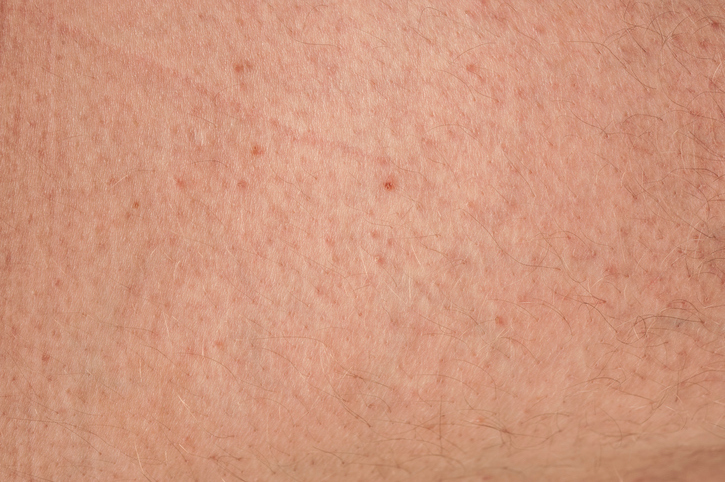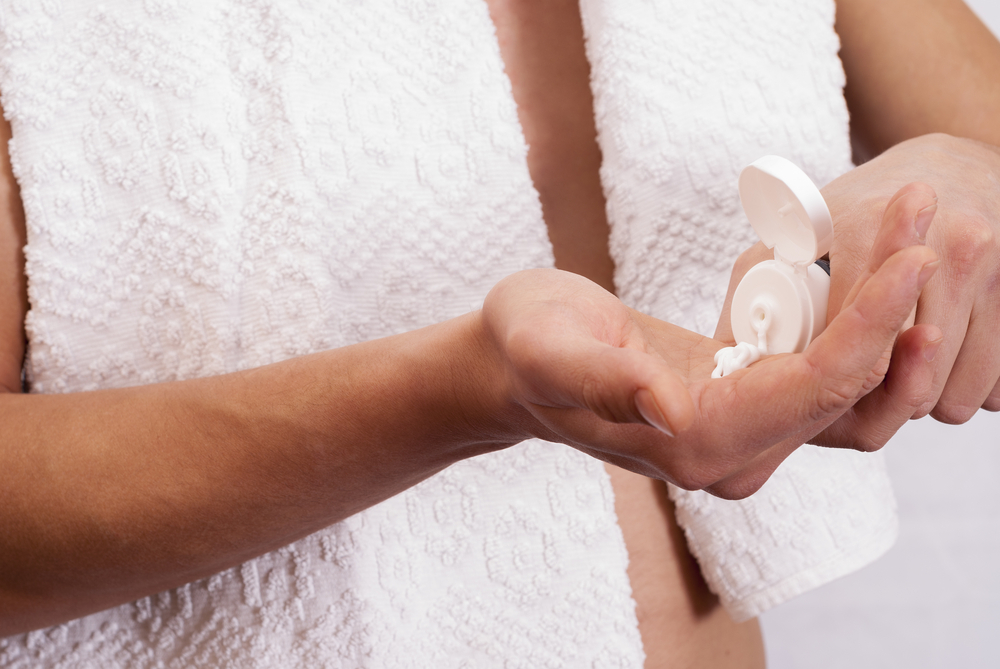Keratosis Pilaris Treatments from U.S. Dermatology Partners
What Is Keratosis Pilaris?
Keratosis pilaris is a common skin condition characterized by small, hard bumps that may make your skin feel like sandpaper. Most often they appear on your upper arms, thighs and buttocks, and sometimes are accompanied by redness or swelling. In some cases they may appear on your face.
It is caused by a buildup of keratin, a protein that protects skin from infections. When a buildup forms, it blocks the opening of a hair follicle and creates the bumps, but doctors don’t know what triggers the buildup.

Keratosis pilaris, a condition where keratin overproduction causes clogged pores, can lead to red bumps and irritation on the skin.
Find This Service Near You
Keratosis Pilaris Symptoms
Keratosis pilaris appears as a scattered, patchy rash consisting of very small red or tan bumps. There can be as few as 10 or as many as several hundred small, rough bumps in the area and the skin will have a fine, sandpaper-like texture. If inflammation is present, some of the bumps may be slightly red or have a light-red halo.
Who Is at Risk for Keratosis Pilaris?
Keratosis pilaris is commonly seen in children and adolescents, but it can also occur in adults. Females are more likely than males to get it, and it usually begins sometime by the age of 10. Doctors are not sure of its causes, but it appears to be inherited and is more common in twins, as well as people with atopic dermatitis and with dry skin.
Keratosis Pilaris Treatments

Keeping skin hydrated is an important part of managing your keratosis pilaris.
While there’s no cure for keratosis pilaris, moisturizing lotions or creams may help. Topical exfoliants can help remove dead skin, while topical retinoids can help prevent the hair follicle from becoming plugged.
In severe cases, laser treatments can be used to reduce redness and inflammation. The doctors at U.S. Dermatology Partners can advise you on which treatments are best for your situation.
Keratosis Pilaris Prevention
Using topical exfoliants to keep the skin free from dead skin cells may help prevent the problem.
*Results may vary by individual
